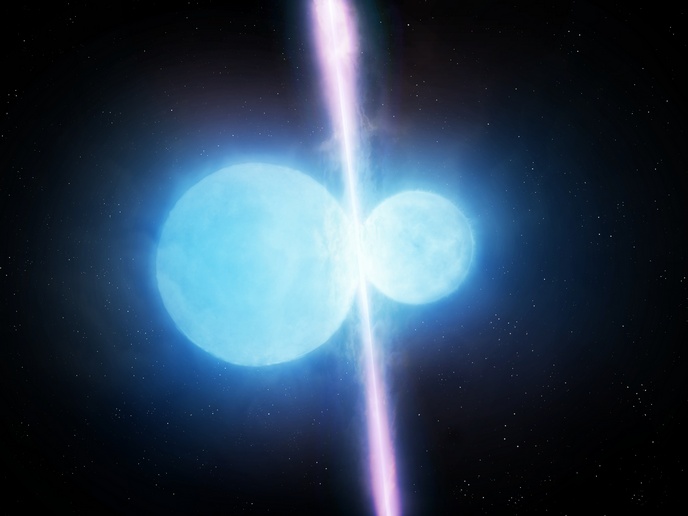New insights on binary star evolution
Common envelope evolution (CEE) is a short yet critical phase in the evolution of a binary star, a system of two stars that are gravitationally bound and orbit a common centre of mass. During this phase, the binary can lose a significant fraction of its mass, energy and angular momentum. In some cases, ‘Star One and Star Two’ can even merge to form a single object. While this phenomenon seems to scream ‘Look at me! Look at me now!’, CEE remains one of the least understood phases of binary star evolution. “But the consequences of our lack of understanding are far-reaching in astronomy,” says Ondřej Pejcha(opens in new window), an astrophysicist at Charles University(opens in new window) in Prague. For example, CEE plays a critical role in the evolutionary pathways that involve compact objects such as white dwarfs, neutron stars and black holes. “A particularly important and timely aspect of this is understanding the origin and evolution of systems of black holes and neutron stars where we observe their mergers with gravitational waves,” adds Pejcha. With the support of the EU-funded Cat-In-hAT(opens in new window) project, Pejcha set out to provide new insight into the important yet mysterious phenomenon of CEE.
Examining the 3D dynamics of common envelope evolution
At the heart of the project is the use of magnetohydrodynamics that allowed researchers to examine the three-dimensional dynamics of CEE – with a particular focus on the evolution towards the final remnant phase. Magnetohydrodynamics is a tool for studying how electrically conducting fluids, such as plasmas commonly encountered in the universe, evolve and interact with magnetic fields. “These simulations let us quantitatively assess the mechanisms responsible for transporting angular momentum and energy and amplifying magnetic fields, along with understanding how these processes interact with the central binary,” explains Pejcha. The project also created an innovative radiation transfer module for a moving mesh hydrodynamical code. The code has since been applied to the wind-reprocessed transients and tidal disruption events found at the centre of galaxies, along with those transients associated with CEE. Mesh divides 3D space into a grid of smaller, simpler shapes to enable computer simulations. Moving mesh hydrodynamical codes are a class of computational fluid dynamics tools used to solve fluid equations on a computational mesh that moves with the fluid, thus reducing numerical errors.
Advancing astronomy’s understanding of common envelope evolution
The project successfully advanced astronomy’s understanding of the CEE phenomenon. “We turned common envelope transients into probes of binary evolution and offered new insights into the late stages of common envelope evolution,” notes Pejcha. While the Cat-In-hAT project may be finished, the work of its researchers goes on. “I am particularly proud that the PhD students and postdocs working on this project were able to win competitive follow-up positions at various institutions in Europe and the United States, where I am sure many will continue to advance the research we started with this European Research Council(opens in new window) supported project,” concludes Pejcha. Pejcha himself also plans to further explore some of the topics from the project, including applying the radiation moving mesh code to research questions related to a range of astronomical transients.



